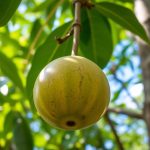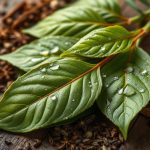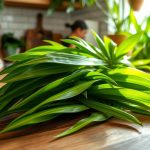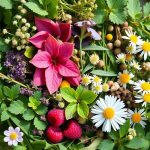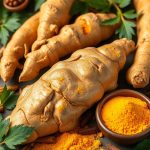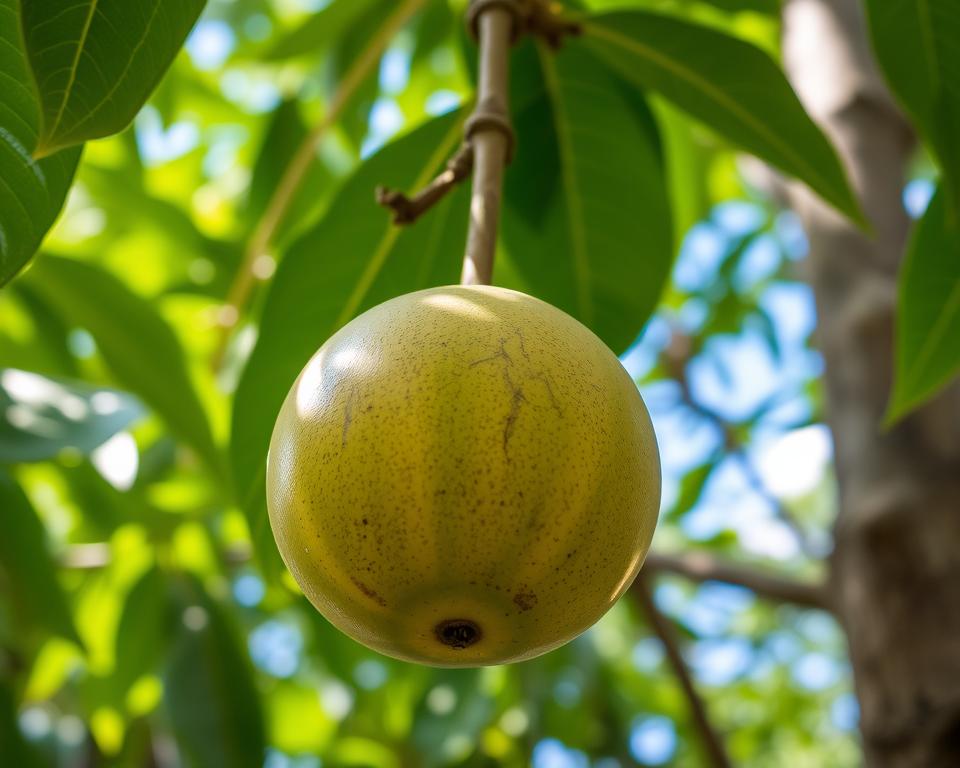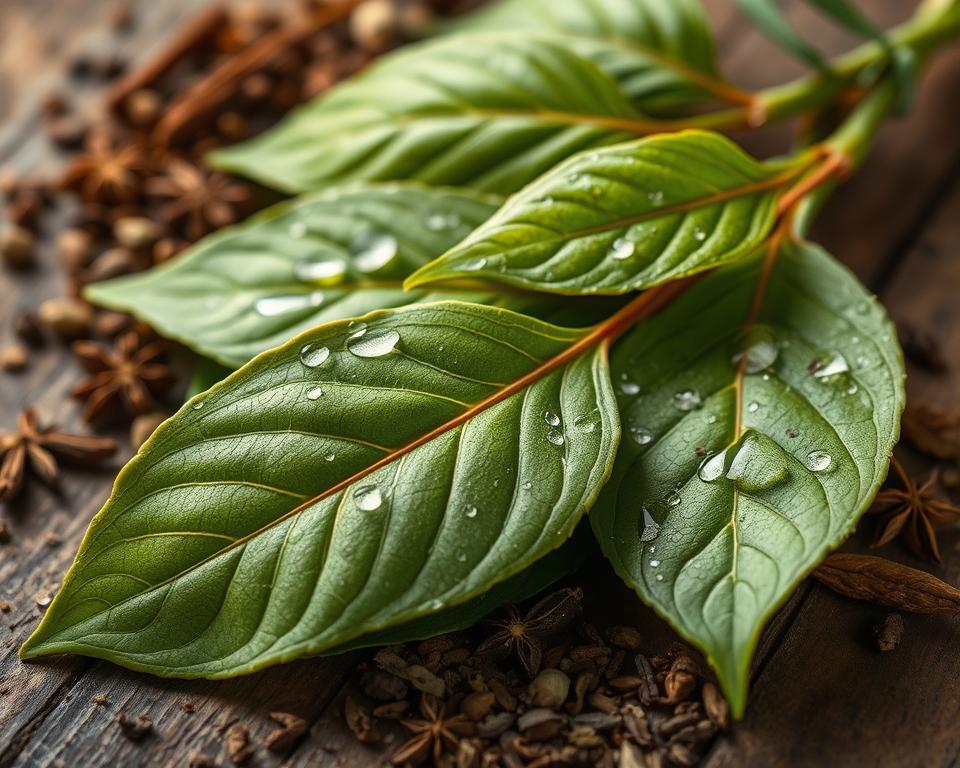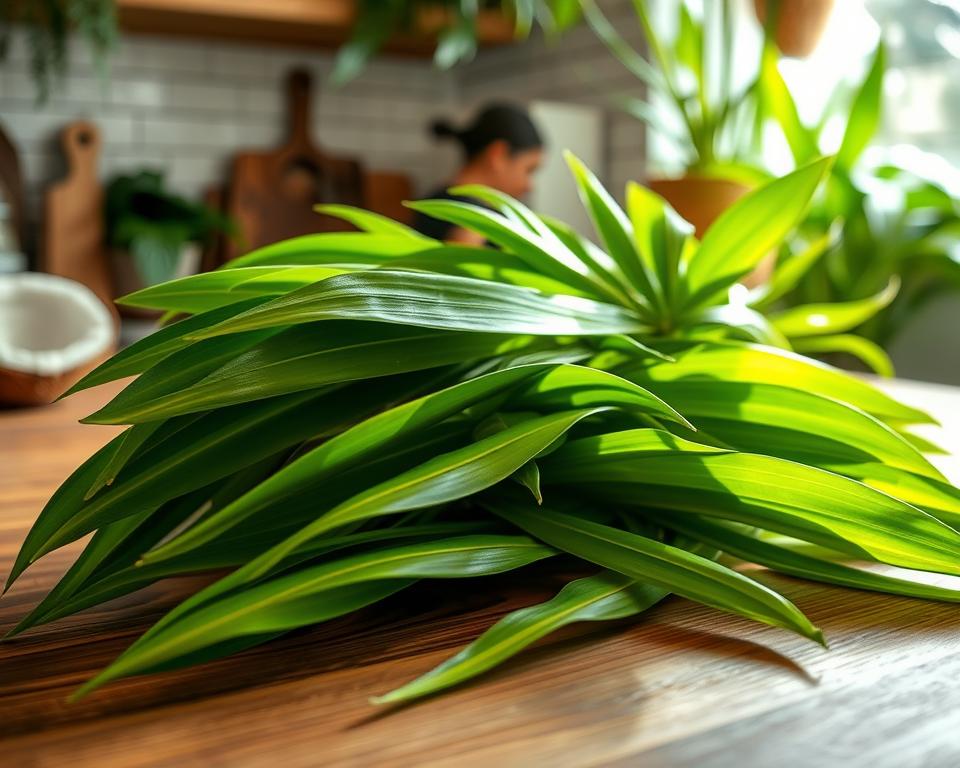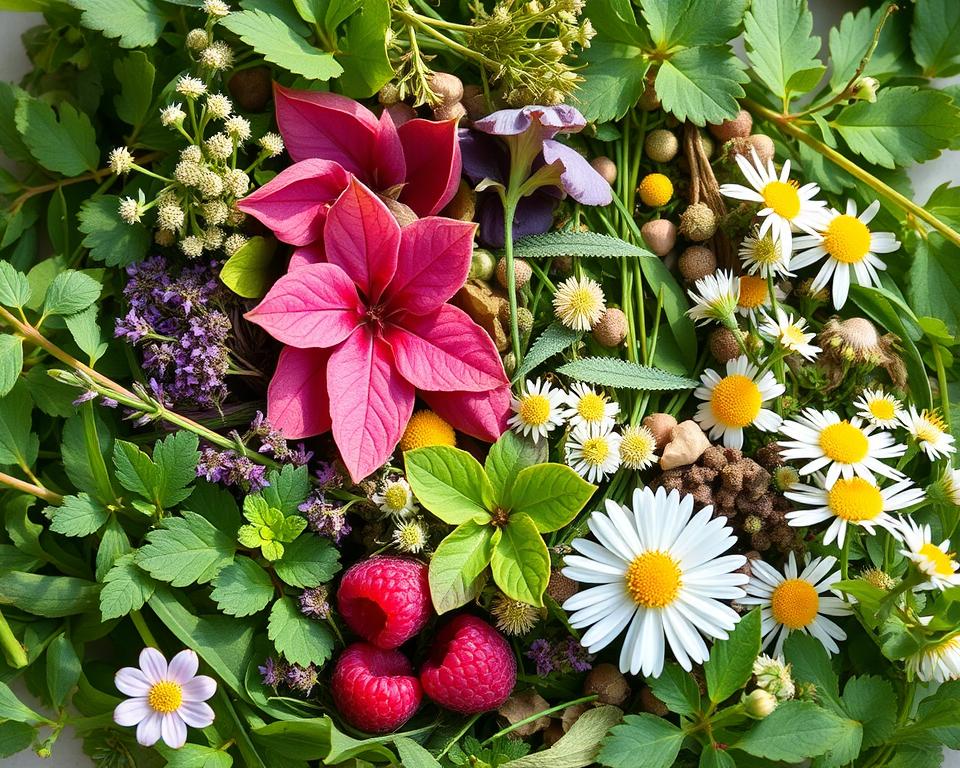Lavender, with its lovely purple flowers, is well-known for its amazing smell and many uses. It’s a common sight in homes all over the globe. People use it for many things, from calming scents in aromatherapy to skin care products. In this guide, we’ll talk about the perks of lavender, its uses, and tips for growing it at home.
Read interesting things at : tosawakan
Key Takeaways
- Lavender is a versatile herb with a wide range of benefits, from stress relief to skin care.
- It has a distinct, calming aroma that makes it a popular choice for aromatherapy and relaxation.
- Lavender essential oil is widely used in natural remedies and beauty products.
- Lavender can be easily grown at home, provided it receives the right amount of sunlight and soil conditions.
- Harvesting and drying lavender flowers can be a rewarding process for home gardeners.
Introduction to Lavender
Lavender is an intriguing plant part of the mint family. It’s famous for its unique purple flowers and relaxing fragrance. This herbal plant is ancient and comes from the Mediterranean. It has a deep history rich in various cultures and uses.
The word “lavender” comes from the Latin “lavare,” which means “to wash.” This shows how it’s been used for body care and cleaning for a long time. Lavender is now common in many items like essential oils and skincare due to its calming smell and benefits.
Lavender is well-liked for many uses. Its beautiful purple flowers and soothing fragrance are used in gardens and more. People love it for its smell, in cooking, and for how it looks. Lavender truly adds something special wherever it’s found.
“Lavender is not just a pretty flower – it’s a versatile and powerful herb that has been used for centuries in a variety of applications.”
Lavender: A Fragrant and Versatile Herb
Lavender is a favorite herb known for its sweet smell and many uses. It comes in different types, each with its own features and benefits.
Varieties of Lavender
There are several kinds of lavender, such as English, French, and Spanish lavender. They vary in look, smell, and how they grow. This lets people who love gardening pick the perfect lavender for their needs.
- English lavender is known for its classic, full-bodied fragrance and its ability to thrive in cooler climates.
- French lavender boasts vibrant purple flowers and a slightly more intense aroma, often used in perfumes and essential oils.
- Spanish lavender features distinctive bracts that resemble rabbit ears, and its fragrance is often described as a blend of lavender and rosemary.
Lavender’s Distinct Aroma
Lavender smells like a pretty mix of flowers, herbs, and a bit of sweetness. It has a scent of linalool and linalyl acetate in its essential oils. This makes it great for making perfumes, oils, and cleaning and beauty products.
“The scent of lavender is soothing, calming, and transporting. It has a way of instantly lifting one’s mood and spirits.”
People all over the world love lavender for its amazing scent. It’s used in beauty, cooking, and for relaxation.
| Lavender Variety | Appearance | Fragrance | Growing Conditions |
|---|---|---|---|
| English Lavender | Compact, bushy plants with grey-green foliage and purple-blue flowers | Classic, full-bodied lavender scent | Thrives in well-drained soil and full sun |
| French Lavender | Taller plants with distinctive purple bracts and flowers | Intense, slightly sweet aroma | Prefers warm, Mediterranean-like climates |
| Spanish Lavender | Compact plants with unique rabbit ear-shaped bracts and purple flowers | Blend of lavender and rosemary notes | Tolerates a wide range of soil and climate conditions |
Health Benefits of Lavender
Lavender is famous for making us feel calm and stress-free. It smells nice and relaxes our mind and body. This can lower blood pressure and heart rate, reducing stress. It’s also known for helping people sleep better.
Stress Relief and Relaxation
Smelling lavender can really help with stress. Its scent can lower stress signs like heart rate. Studies show it can also reduce how anxious you feel and boost your mood, improving your wellbeing.
Sleep Aid
Lavender isn’t just for stress. It’s great for sleeping too. Its smell can make you feel sleepy and help you stay asleep. One study showed people had better sleep and felt more awake during the day after using lavender. Its relaxing smell can also make sleep problems less severe, a natural sleep aid.
“Lavender has been used for centuries to promote relaxation and improve sleep. Its calming aroma and therapeutic properties make it a valuable natural remedy for addressing stress and insomnia.”
Aromatherapy with Lavender
Lavender is a top choice for those into aromatherapy because of its unique smell and calming effects. The essential oils from the lavender plant can calm the mind and body. They are said to help with stress, anxiety, and sleep problems.
Aromatherapy using lavender includes oils, candles, diffusers, and bath items. Its lovely scent can help people relax. This makes it a go-to for anyone needing a break from life’s daily stresses.
“The scent of lavender has a profound effect on the human nervous system, triggering a physiological response that can lower heart rate, blood pressure, and stress hormone levels.”
Lavender aromatherapy is great for sleep. The essential oil’s calming effects can help you relax before bed. This often leads to a better night’s sleep, improving your health and how you feel the next day.
Besides helping with sleep, lavender is also shown to ease anxiety and depression symptoms. Its soothing scent can calm your thoughts and bring a sense of peace. It’s an effective way to deal with stress and to find balance emotionally.
Using lavender in the air, bath, or with candles is a simple, natural way to benefit from this plant. Adding lavender to your daily life can help with sleep, relaxation, and stress.
Lavender in Skincare and Beauty
Lavender is a fragrant herb known for its benefits in skincare and beauty. It’s highly valued in cosmetics and wellness. This is because of its many uses.
Lavender Essential Oil
Lavender oil is famous for being soothing, antibacterial, and anti-inflammatory. It’s used in many skincare products. Its mild nature is good for sensitive skin and can help with issues like acne and eczema.
This essential oil calms and helps the skin look healthy and bright. When used in lotions and creams, it can reduce redness and soothe the skin. This leads to a brighter complexion.
| Skincare Benefits of Lavender Essential Oil | Explanation |
|---|---|
| Antibacterial Properties | Lavender oil’s natural antibacterial qualities help fight acne-causing bacteria, making it an effective treatment for blemishes and breakouts. |
| Anti-Inflammatory Effects | The soothing and calming properties of lavender oil can reduce inflammation, redness, and swelling in the skin, providing relief for conditions like eczema and sunburn. |
| Skin Rejuvenation | Lavender oil can help your skin renew itself and get back its flexibility. This can make fine lines and wrinkles less visible, leading to a fresher, younger look. |
It’s not just for the skin. Lavender oil is also used in hair care, bath products, and aromatherapy. Its sweet smell helps create a calming atmosphere. This can make you feel better and cared for.
Using products with lavender daily is a great way to enjoy its benefits. It can help with your skin and make you feel good inside and out.
Culinary Uses of Lavender
Lavender is famous not just for its smell and medicines. It has a great use in cooking too. This herb brings a nice flowery taste to foods and drinks.
Lavender is often used in baking. It pairs well with honey, vanilla, and citrus. Many love it in scones, cookies, and cakes. You can also use lavender in sugar or syrup for drinks and treats like ice cream.
In savory dishes, lavender adds a unique twist. You can use its leaves and flowers to season meats, veggies, or grains. It’s also great in homemade bread, bringing a special taste.
| Culinary Use | Flavor Profile | Recommended Pairings |
|---|---|---|
| Baked Goods | Delicate, slightly sweet | Honey, vanilla, citrus |
| Beverages | Floral, aromatic | Lemon, lime, simple syrup |
| Savory Dishes | Fragrant, herbaceous | Roasted meats, vegetables, grains |
If you want to make your baking more special or your meals flavorful, try lavender. It’s a versatile herb that brings something beautiful to the table. Anyone who loves cooking will find it very useful.
“Lavender is a versatile herb that can add a delightful floral note to both sweet and savory dishes. Its subtle yet captivating flavor makes it a valuable ingredient for the discerning home cook or professional chef.”
Lavender in Home and Garden
Lavender is an herb that brings elegance and calm to a home or garden. It has a lovely smell and many uses that make spaces better. You can use it indoors and out for a better living environment.
Sachets and Potpourri
Making fragrant sachets and potpourri with lavender is popular. You dry the flowers and put them in fabric pouches or bowls. These simple projects are nice to give and they also freshen the air at home.
Decorative Landscaping
In the garden, lavender adds color and scent. Its silver-green leaves and purple flowers look beautiful. They attract bees and smell nice, making any area more enjoyable.
“Lavender’s versatility in the home and garden is truly remarkable. From fragrant sachets to captivating landscaping, this herb offers a wealth of possibilities for those seeking to create a soothing, nature-inspired atmosphere.”
Adding lavender can make your home more peaceful. It’s not just for smell – it looks pretty too. This herb lets you enjoy a quiet, natural setting indoors or out.
Growing Lavender at Home
Lavender is a captivating herb that can be grown in many gardens. Cultivating lavender is rewarding, even for beginners. It’s crucial to know the right soil, sunlight, and care for your plants to thrive.
Soil and Sunlight Requirements
Lavender loves well-drained, alkaline soil with a pH of 6.0 to 8.0. The soil must be poor in nutrients, ensuring beautiful blooms over leafy growth. Place them where they can get more than six hours of sunlight each day for the best results.
Planting and Caring for Lavender
Space out your lavender plants 2 to 3 feet to help them breathe and grow well. After planting, gently pack the soil to connect it with the roots, and water generously. Regular pruning and removing old flowers help new ones bloom.
Knowing how to grow lavender right can turn your space into a fragrant garden. Follow these steps to enjoy beautiful lavender and an improved garden.
Lavender Harvesting and Drying
To keep the wonderful smell and healing powers of lavender, how you harvest and dry it is important. You should pick lavender just before its flowers open fully. At this time, the essential oil in it is the highest.
For picking lavender, do it in the morning. The dew should be gone but the day shouldn’t be too hot yet. Use sharp shears that are clean to cut the stems. Try to leave a little of the stem so the plant can grow back for more.
- Gather the freshly cut lavender into small, loose bundles.
- Hang the bundles upside down in a well-ventilated, dry area, away from direct sunlight.
- Let the lavender dry for 2-4 weeks. You’ll know it’s ready when the stems break easily, and the buds can be crushed.
You can also use a dehydrator to dry lavender quickly. This method keeps the scent and flavor well. But remember, the drying place should always have good air and not be too hot or damp.
“Properly dried lavender will retain its vibrant color, potent scent, and valuable essential oils, making it ideal for a wide range of uses, from aromatherapy to culinary applications.”
After the lavender dries, you can keep it in tight containers. Or in sachets if you like. Taking good care of the dried lavender means you can enjoy it for many months.
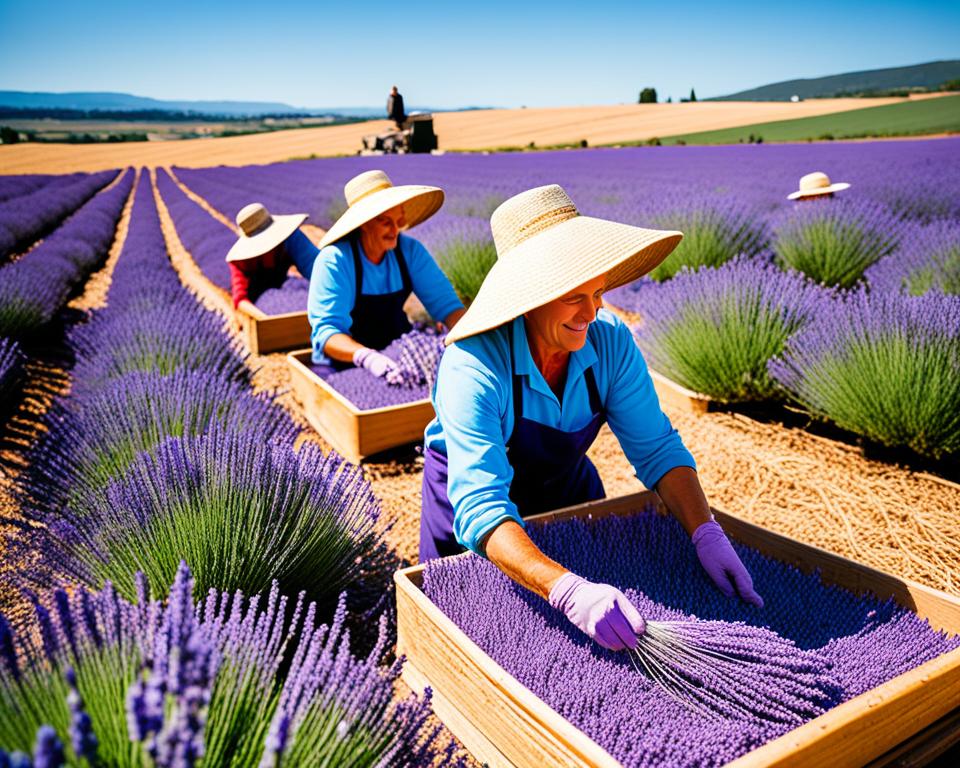
Lavender Essential Oil Extraction
Lavender essential oil comes from the lavender plant’s flowers and leaves. The main method for getting this oil is steam distillation. This method is key for getting the oil’s many uses and benefits.
To use steam distillation, the flowers and leaves are heated with steam. The steam picks up volatile compounds, which include the essential oils. Once those compounds are cooled and turned back into liquid, the essential oil is collected. This oil is rich in scent and can be used in many ways.
This way of lavender essential oil extraction gives us true oil from the plant itself. It keeps the plant’s natural good stuff and healing powers. You can use this oil in aromatherapy, making personal care items, and even cooking. This shows how useful this natural oil is.
| Extraction Method | Description | Benefits |
|---|---|---|
| Steam Distillation | Heating the lavender plant material with steam to vaporize and separate the essential oils. | Produces a pure, concentrated essential oil that retains the plant’s natural properties and therapeutic benefits. |
| Solvent Extraction | Using a chemical solvent to extract the essential oils from the plant material. | Yields a broader range of compounds, including waxes and resins, but may leave behind chemical residues. |
| CO2 Extraction | Using carbon dioxide under high pressure to extract the essential oils. | Produces a highly refined, pure essential oil with minimal impurities or chemical residues. |
Out of all the ways to get lavender essential oil, steam distillation is the top choice. It’s liked for making a pure, top-notch oil. This oil keeps the plant’s healing and good qualities very well.
“The true essence of lavender is captured in its essential oil, which is the result of a carefully orchestrated extraction process.”
We see the passion and hard work put into lavender essential oil extraction. This process gives us a natural product that’s very useful and sought after.
Lavender in Crafts and DIY Projects
Lavender is used in many ways, not just in medicine and cooking. It’s a key part of crafts and DIYs, adding a natural feel to your home. Dried lavender is used in making sachets, adding fragrance to closets. It’s also used in candles and soaps for a calming scent.
Lavender Sachets and Potpourri
Making lavender sachets and potpourri is a fun craft project. Dried flowers are placed in pouches or bowls for a natural air freshener. This DIY is perfect for adding a relaxing scent to any space.
Here’s what you need for a lavender sachet:
- Dried lavender flowers
- Small fabric pouches or bags
- Ribbons or string (optional)
Fill the pouches with lavender and tie them up with ribbons. They make any room smell amazing.
Interested in something more? Try making lavender potpourri. Mix the flowers with cedar, rosemary, or citrus peels. Then place the mix in a bowl for a wonderful scent in your home.
| DIY Lavender Crafts | Benefits |
|---|---|
| Lavender Sachets | Natural air freshener, calming scent |
| Lavender Potpourri | Fragrant home decor, relaxing ambiance |
| Lavender Candles | Soothing lighting, aromatherapy |
| Lavender Soaps | Gentle skin care, calming properties |
Being able to make your own lavender items means you can enjoy its calming effects anytime.
Ecological and Sustainable Lavender Cultivation
Lavender is not just a beautiful scented herb. It’s also a green and lasting crop. Growing lavender uses little and is good for Earth. This makes it loved by those who care about the planet.
Most lavender farms use natural and healthy methods. These care for the land and nature. By doing so, they keep the area diverse and help bees and butterflies thrive. This, in turn, helps not just lavender but all farming to do well.
- Organic and regenerative farming methods are used to minimize the environmental impact of lavender cultivation.
- Sustainable lavender cultivation helps to preserve biodiversity and support pollinator populations, such as bees and butterflies.
- Lavender is a hardy, drought-tolerant plant that requires fewer resources, like water and fertilizers, compared to many other crops.
There are more benefits than just helping the Earth. Lavender fields become homes for many animals. Birds, bugs, and small creatures find food and shelter there.
“Lavender is not only a beautiful and fragrant crop, but it is also a shining example of how agriculture can be practiced in a way that is in harmony with the natural world.”
People are now very aware of how their choices affect nature. This has led to more demand for sustainable lavender. Companies growing lavender in a good way are meeting this demand. They work for the health of the land and everything living around it.
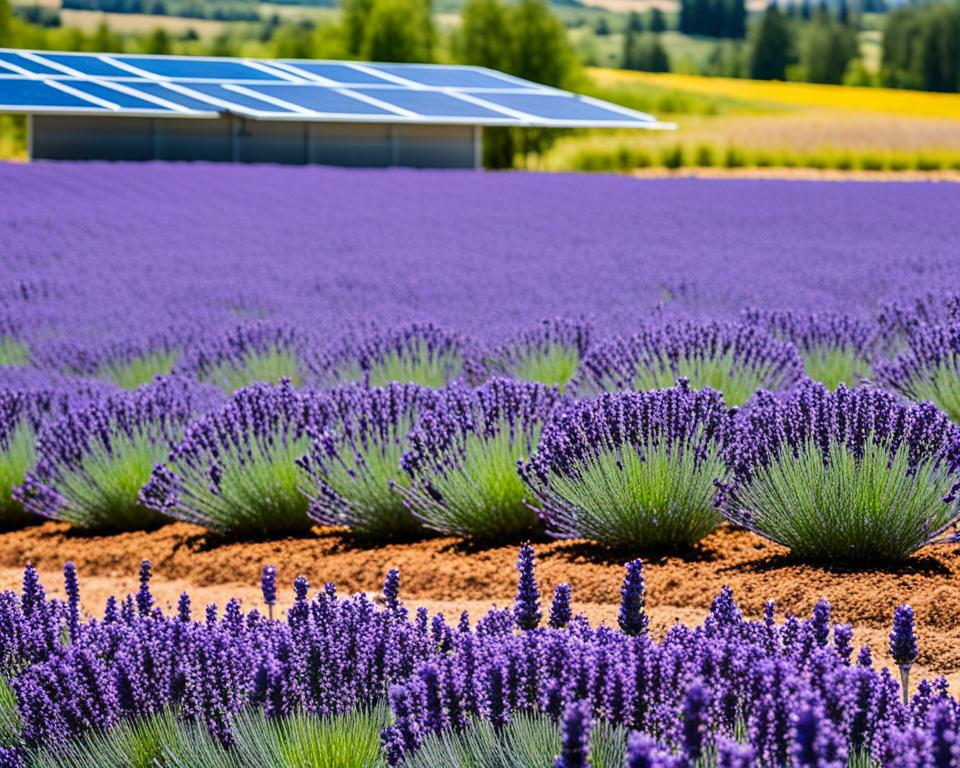
When you choose lavender products from these good farms, you’re doing a lot of good. You get great herb products and help nature-friendly farming. It’s a win-win for you and the planet.
Conclusion
Lavender is not just a pretty herb. It touches the hearts of people all over the world. Its lovely scent calms us, helps beat stress, and is great for skin, cooking, and crafts. No wonder it’s loved by so many and considered vital in our lives.
Learning about growing lavender opens doors to many opportunities. It can make you feel better, make your food tastier, and make your home prettier. Lavender is full of good things waiting to be explored.
Ending this journey with lavender, we leave with a greater love for nature. Using this herb in our daily lives can bring happiness and health. Let’s keep enjoying the benefits it offers, making our lives better in big and small ways.
